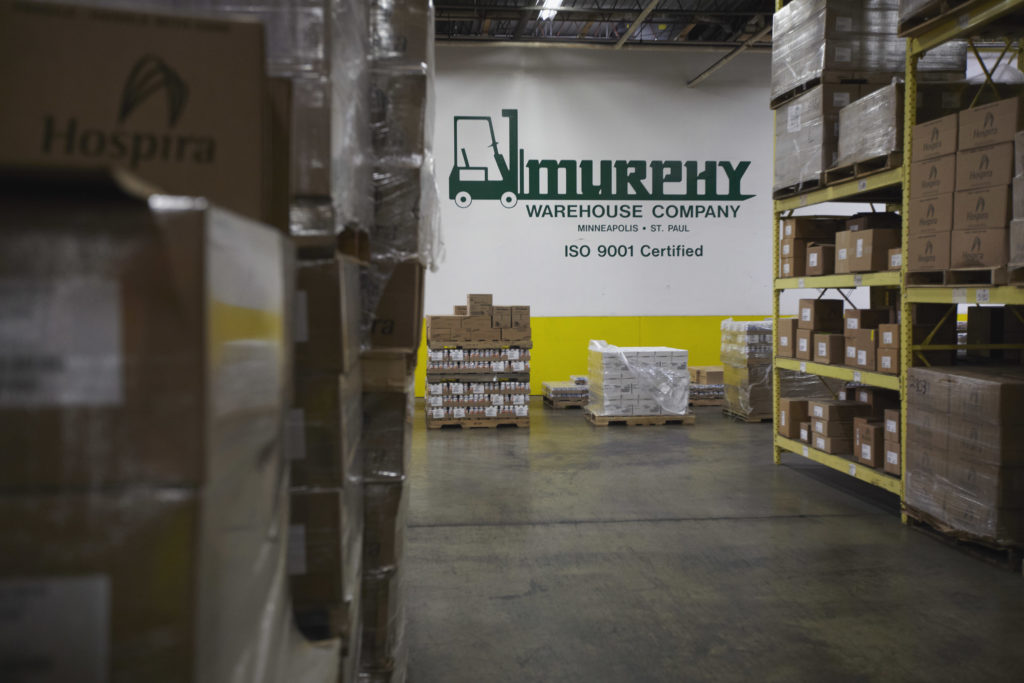The landscape of warehousing and food packaging logistics continues to change rapidly each year. With the changes in retail environments and the rise of e-commerce in the past decade, product packaging has also been upgraded along the way. No packaging is more important than food packaging for many different reasons. From food safety to efficient picking & shipping, the future of food packaging will continue to evolve and benefit the food logistics industry.
Types of Food Grade Packaging used in Warehousing and Logistics
There are so many different types of packaging used in food logistics and warehousing environments to efficiently transport products throughout the world. Efficiently packaging items saves space, reduces handling times, and creates a safe environment for food in the supply chain. Some of the different types of food packaging you may see in food warehousing and logistics include the following;
Bulk packaging
Super Sacks and Bulk Totes
These are large bags, about the size of a full pallet of boxes, attached to a pallet that is typically filled by weight. The most common weight for a super sack or bulk tote is 1 ton or 2,000 pounds.
Weighted Bags
Bags filled by weight are another common bulk packaging solution for food ingredients. Bags are typically 20 to 50 pounds apiece. They can be shipped floor loaded or on pallets and can easily be moved through the supply chain when they are palletized efficiently.
Boxes
Boxes of food items come in many different configurations. Boxes can hold the items themselves or be a large pack, holding the shelf-ready packages. Food packaging boxes sometimes will be ready-to-ship or may need to be re-packed or palletized for shipments. They tend to be the most versatile food packaging logistics option.
Finished Goods
Case Packs
Case packs are when shelf-ready items are put in an outer box. The entire outer box is shipped and typically holds 6 to 12 retail items.
Retail Packaging
Bright colors, designs, and catchy slogans are printed on the outside of packaging designed to be on a shelf or hanging on display. Retail packaging comes in every shape and size you can imagine.
Ready-to-Ship Packaging
Ready-to-ship packaging is the future of food packaging logistics solutions. These boxes can be stored efficiently and are designed to be picked and shipped quickly. Whether it’s for local delivery of fresh food or for products being shipped throughout the country, when products are in ready-to-ship packaging, the operation can become more efficient.

E-commerce Effect on Packaging
With the rise in e-commerce orders each year, finding safe, efficient, and attractive packaging solutions have been at the forefront for virtually every product. Food and food ingredients have faced some of the largest challenges in the space due to the need for extreme cleanliness and bulk options as well. E-commerce food packaging designs will continue to evolve with sustainable, ready-to-ship options becoming more common each year.
Sustainability in packaging
As the need for more packaging has risen through the rise in e-commerce, so has the demand for sustainable and eco-conscious products. While sustainability wasn’t always thought of for any packaging, food in particular has seen some of the most impactful changes. Recycled, natural and even plant-based packaging can reduce impact vs. standard plastic packaging that has been used for decades. Sustainable food packaging has even been mandated in numerous parts of the country. In Minneapolis specifically, foam containers have been replaced by recyclable and plant-based boxes and bags for takeout and delivery orders. This extends to the retail environment as well with sustainable claims printed right on packaging for consumers to see on the shelves.
Safety in Food Packaging Logistics
Food safety should be at the forefront of any food-grade supply chain. Designing the right type of packaging for specific foods is critical for companies shipping food throughout the country. Protecting food as it flows through the supply chain and hits retail shelves is a top priority, and has become especially important as the world was changed with COVID-19. Food logistics comes into play for freshly delivered foods and ready-to-eat foods in grocery and convenience store environments as well. From shelf stability to delivery options, consumers must feel that their food has been protected from contamination.
The Next Phase of Food Packaging Logistics
Despite the fact that these are the packaging trends of the future, it is crucial for businesses to invest in these tactics now. Companies are transforming their food packaging logistics and supply chains at a rapid rate; hesitating can result in falling behind the competition.
At Murphy Logistics, we have the experience and solutions to make these adjustments seamless for your company. Discuss your projects with our team and discover how to step into the future with your food packaging logistics strategies.
